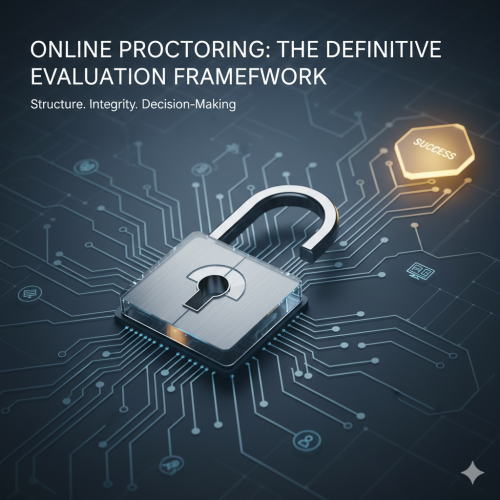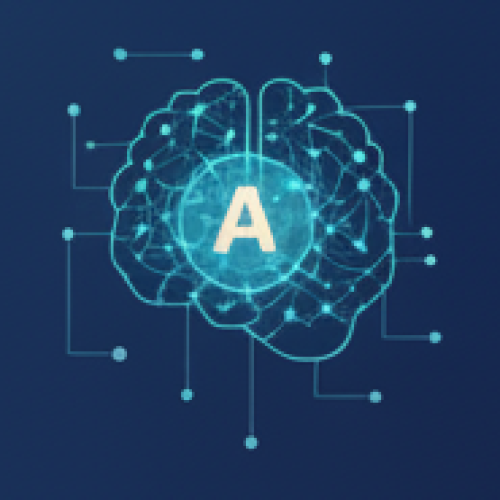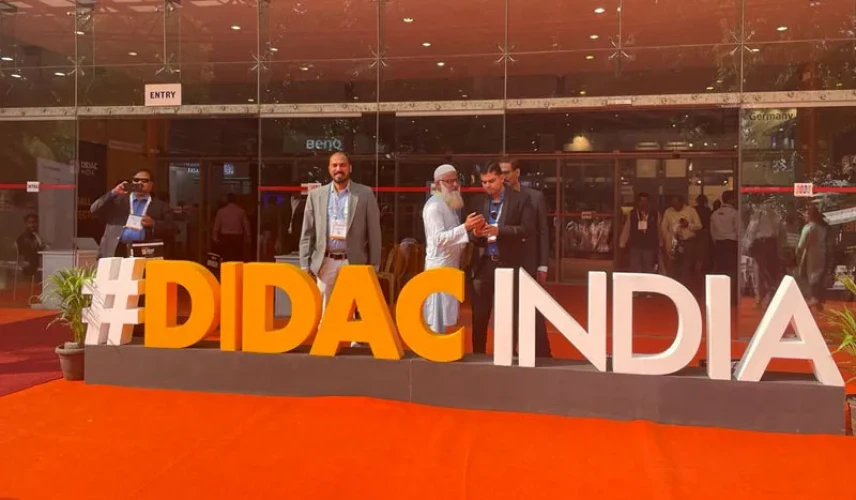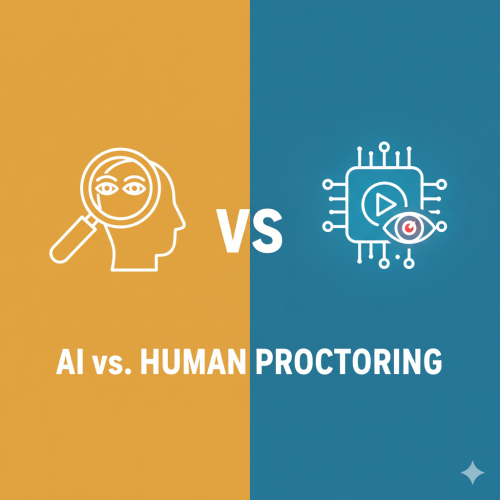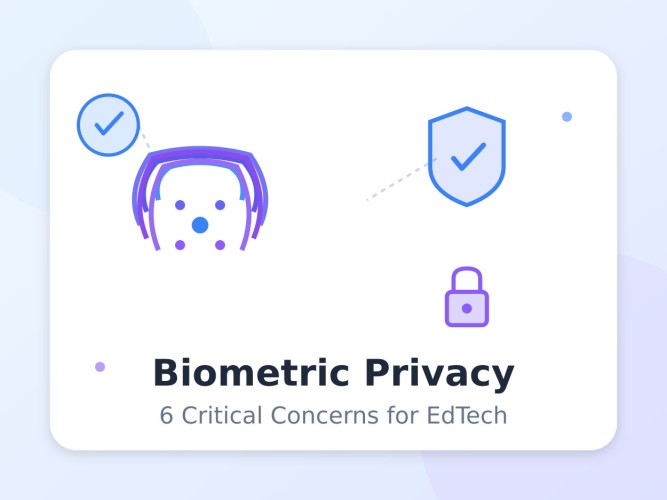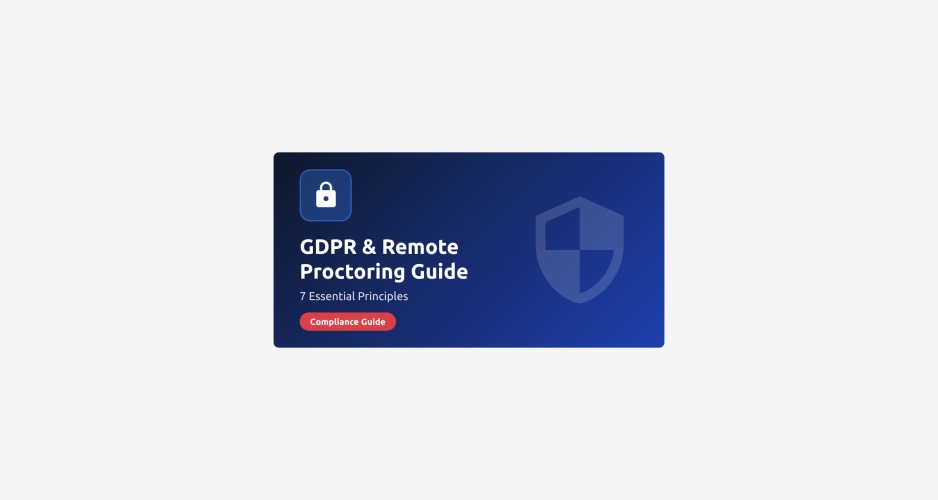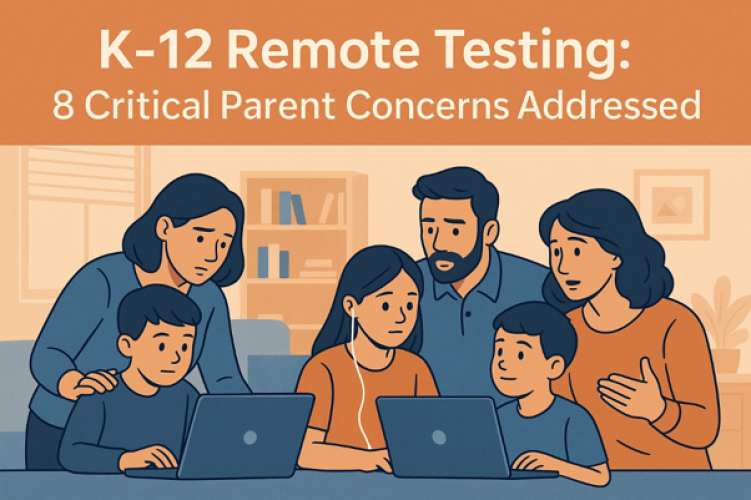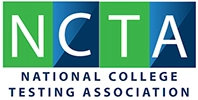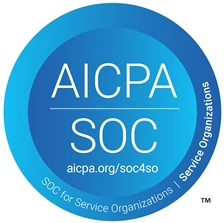The landscape of remote assessment security is evolving at an unprecedented pace. As educational institutions, certification bodies, and employers increasingly rely on remote testing, the technologies and methodologies used to secure these assessments are undergoing rapid transformation. This evolution is driven by advances in technology, changing privacy expectations, evolving regulatory frameworks, and lessons learned from widespread remote assessment implementation.
This analysis explores seven significant trends that are reshaping the future of remote assessment security. From artificial intelligence advancements to privacy-centered design, these trends represent both challenges and opportunities for organizations that depend on secure remote testing. Understanding these emerging developments is essential for assessment providers who want to stay ahead of security threats while providing positive testing experiences.
For decision-makers responsible for assessment security, this forward-looking analysis provides valuable insights into how the remote proctoring landscape is likely to evolve over the next three to five years. By anticipating these trends, organizations can make strategic investments in technologies and approaches that will remain effective and compliant in an increasingly complex security environment.
Trend 1: AI-Powered Behavioral Analysis Beyond Facial Recognition
Current State of AI in Proctoring
Today's AI-enhanced proctoring systems primarily focus on basic pattern recognition:
- Facial detection and tracking to ensure the test-taker remains present
- Eye movement monitoring to detect potential screen switching
- Basic motion detection for unusual movements
- Rudimentary sound analysis for voice detection
- Simple pattern recognition for flagging suspicious behaviors
These capabilities have improved security but suffer from significant limitations, including high false-positive rates, limited contextual understanding, and excessive focus on facial monitoring that raises privacy concerns.
The Emerging Trend: Holistic Behavioral Analysis
The next generation of AI-powered proctoring is moving beyond simple pattern recognition toward sophisticated behavioral analysis:
Advanced Behavioral Indicators
- Typing patterns: Analyzing keystroke dynamics to verify consistent identity throughout the assessment
- Interaction patterns: Monitoring how users interact with assessment interfaces for anomaly detection
- Temporal analysis: Identifying unusual timing patterns in responses that may indicate cheating
- Contextual awareness: Understanding the relationship between test content and test-taker behavior
- Environmental analysis: Assessing the complete testing environment rather than just the test-taker
Multimodal AI Integration
- Combining multiple data streams (video, audio, interaction data) for more accurate analysis
- Reducing false positives through cross-validation across different behavioral indicators
- Creating baseline behavioral profiles that adapt to individual test-taker characteristics
- Developing more nuanced understanding of what constitutes suspicious behavior
Practical Applications
- Detecting sophisticated cheating methods that current systems miss
- Reducing false flags that create unnecessary stress for honest test-takers
- Shifting focus from invasive facial monitoring to more holistic security approaches
- Enabling more natural testing experiences while maintaining security
Future Implications
As AI behavioral analysis matures, we can expect:
- Reduced reliance on continuous facial monitoring, addressing privacy concerns while improving security
- More accurate cheating detection with significantly lower false positive rates
- Personalized security baselines that adapt to individual test-taker characteristics
- Less intrusive monitoring that creates more natural testing experiences
Organizations should prepare for this trend by:
- Evaluating proctoring solutions based on the sophistication of their behavioral analysis capabilities
- Considering how multimodal AI approaches might integrate with existing assessment systems
- Developing policies that address the use of behavioral data in security decisions
- Balancing enhanced security capabilities with privacy considerations
Trend 2: Privacy-Centered Proctoring Design
Current Privacy Challenges
Remote proctoring has faced significant criticism and resistance due to privacy concerns:
- Invasive monitoring of personal spaces and behaviors
- Collection and storage of biometric data
- Potential for surveillance beyond assessment security needs
- Lack of transparency about data usage and retention
- Inconsistent compliance with evolving privacy regulations
These concerns have led to student protests, faculty resistance, and even legal challenges to remote proctoring implementations.
The Emerging Trend: Privacy by Design
The future of remote proctoring is being shaped by privacy-centered design principles:
Data Minimization
- Collecting only the data necessary for security verification
- Focusing on environmental security rather than continuous personal monitoring
- Implementing automatic data deletion after minimum necessary retention periods
- Creating security approaches that require less personally identifiable information
- Developing techniques that verify assessment security without recording sessions
Transparency and Control
- Providing clear, understandable information about monitoring practices
- Giving test-takers visibility into what is being monitored and why
- Offering options for how security is implemented when possible
- Creating clear boundaries for the beginning and end of monitoring periods
- Developing more transparent AI flagging processes
Regulatory Compliance by Design
- Building systems that inherently comply with GDPR, CCPA, and other privacy regulations
- Implementing regional data storage to meet local requirements
- Creating flexible frameworks that can adapt to evolving regulatory landscapes
- Developing privacy impact assessment processes for new security features
- Establishing clear data subject rights management processes
Practical Applications
- 360-degree environmental monitoring that focuses on the room rather than the person
- Selective recording that captures only security exceptions rather than entire sessions
- Federated learning approaches that improve AI without centralizing personal data
- Privacy-preserving authentication that verifies identity with minimal biometric data
Future Implications
As privacy-centered design becomes standard, we can expect:
- Greater acceptance of remote proctoring as privacy concerns are addressed
- More sustainable compliance with evolving global privacy regulations
- Reduced legal and reputational risk for assessment providers
- New security approaches that achieve security goals with less personal data
Organizations should prepare for this trend by:
- Evaluating current proctoring solutions against privacy-by-design principles
- Reviewing data collection and retention practices for potential minimization
- Improving transparency about security measures for test-takers
- Monitoring evolving privacy regulations in relevant jurisdictions
Trend 3: Continuous Authentication Replacing Point-in-Time Verification
Current Authentication Limitations
Traditional remote proctoring relies on point-in-time identity verification:
- Initial ID checks at the beginning of an assessment
- Periodic facial comparison against ID photos
- Basic measures that can be circumvented by substitution after initial verification
- Limited ability to ensure the same person completes the entire assessment
- Vulnerability to sophisticated identity fraud techniques
These approaches create security gaps and often fail to detect unauthorized assistance that begins after initial verification.
The Emerging Trend: Continuous Authentication
The future of identity verification in remote proctoring is moving toward continuous authentication:
Multimodal Biometric Verification
- Behavioral biometrics: Analyzing typing patterns, mouse movements, and interaction styles
- Voice printing: Periodic voice sample analysis for consistent identity verification
- Micro-facial recognition: Continuous low-impact facial characteristic verification
- Writing style analysis: Verifying linguistic patterns remain consistent
- Interaction consistency: Ensuring user behavior patterns remain stable throughout assessment
Non-Disruptive Verification
- Passive monitoring that doesn't interrupt the assessment experience
- Background verification that doesn't require specific user actions
- Continuous validation without test-taker awareness
- Adaptive verification that increases scrutiny only when inconsistencies appear
- Layered approaches that combine multiple verification methods
Advanced Anti-Spoofing Measures
- Liveness detection that prevents the use of photos or recordings
- Depth sensing to prevent 2D spoofing attempts
- Environmental consistency monitoring to detect handoffs
- Device-based verification factors that are difficult to transfer
- Challenge-response mechanisms that verify human presence
Practical Applications
- Ensuring the same person completes the entire assessment
- Detecting mid-assessment substitution attempts
- Reducing the need for disruptive re-verification
- Creating more natural assessment experiences while improving security
Future Implications
As continuous authentication becomes standard, we can expect:
- Significant reduction in identity fraud during remote assessments
- Less disruptive security measures that improve the test-taker experience
- Higher confidence in remote assessment results from stakeholders
- New approaches to identity verification that balance security and privacy
Organizations should prepare for this trend by:
- Evaluating authentication capabilities beyond initial verification
- Considering how continuous authentication might integrate with existing systems
- Developing policies for handling authentication anomalies
- Balancing robust verification with minimally disruptive experiences
Trend 4: Secure-by-Design Assessment Methodology
Current Assessment Security Approach
Traditional approaches to assessment security focus on monitoring and restriction:
- Lockdown browsers that limit access to resources
- Monitoring for suspicious behaviors during assessment
- Restrictive testing environments that limit test-taker actions
- Standardized conditions that may not reflect real-world application
- Security as an overlay to existing assessment designs
This reactive approach often creates negative test experiences and can still be vulnerable to sophisticated cheating methods.
The Emerging Trend: Security-Integrated Assessment Design
The future of assessment security involves rethinking assessment design itself:
Performance-Based Assessment
- Designing assessments that evaluate application rather than recall
- Creating scenario-based questions that require demonstration of skills
- Developing assessments that allow resource access but evaluate usage
- Implementing project-based assessments that are inherently difficult to cheat on
- Focusing on higher-order thinking skills that are harder to fake
Personalized Assessment Paths
- Adaptive testing that creates unique assessment paths for each test-taker
- Question banks large enough to ensure different questions for each assessment
- Dynamic content generation that creates unique assessment items
- Time-limited access to reduce pre-knowledge value
- Individualized case studies or scenarios that prevent answer sharing
Authentic Assessment Design
- Creating assessments that mirror real-world application contexts
- Allowing appropriate resource access as would be available in practice
- Evaluating process and approach rather than just final answers
- Implementing portfolio-based assessment components
- Developing collaborative assessment components with individual verification
Practical Applications
- Certification exams that test practical application in simulated environments
- Academic assessments that evaluate critical thinking rather than memorization
- Pre-employment assessments that predict job performance through application
- Professional licensing that verifies capability through demonstration
- Continuing education that focuses on practical skill development
Future Implications
As secure-by-design assessment methodology becomes standard, we can expect:
- Reduced reliance on restrictive monitoring as assessment design itself prevents cheating
- More authentic assessment experiences that better predict real-world performance
- Higher stakeholder confidence in remote assessment results
- Evolution of assessment content toward application and critical thinking
Organizations should prepare for this trend by:
- Reviewing current assessment design for security vulnerabilities
- Exploring performance-based assessment options for high-stakes testing
- Developing larger question banks and adaptive testing capabilities
- Investing in assessment design expertise alongside security technology
Trend 5: Hybrid Proctoring Models
Current Proctoring Approaches
Remote proctoring currently tends toward all-or-nothing approaches:
- Fully automated proctoring with AI monitoring and flagging
- Live human proctoring with real-time observation
- Record-and-review approaches with after-the-fact human evaluation
- Lockdown-only approaches with no human verification component
- In-person proctoring at testing centers as the alternative to remote options
These distinct models each have significant limitations in scalability, accuracy, or security coverage.
The Emerging Trend: Sophisticated Hybrid Models
The future of proctoring involves intelligent hybrid approaches:
AI-Human Collaboration
- AI systems that escalate only genuine concerns to human proctors
- Human oversight of AI decision-making for continuous improvement
- Tiered monitoring based on risk assessment and stakes
- Dynamic allocation of human proctoring resources based on AI flags
- Continuous feedback loops between human judgment and AI systems
Flexible Security Levels
- Risk-based security that applies different measures based on assessment stakes
- Adaptive monitoring that increases scrutiny only when concerns arise
- Contextual security that considers subject matter, stakes, and user history
- Customizable security frameworks for different assessment types
- Progressive security that evolves throughout the assessment based on behavior
Multi-Location Models
- Distributed testing centers for high-stakes assessments
- Verified location options beyond traditional testing centers
- Hybrid models combining some in-person verification with remote completion
- Partner location networks for supervised assessment
- Micro-testing centers in educational or workplace environments
Practical Applications
- High-stakes assessments with AI pre-screening and human verification
- Tiered security approaches based on certification or course value
- Progressive monitoring that adapts to test-taker behavior patterns
- Distributed testing networks that combine convenience with security
- Customized security frameworks for different assessment types
Future Implications
As hybrid proctoring models become standard, we can expect:
- More efficient use of human proctoring resources through AI pre-screening
- Better test-taker experiences with security levels appropriate to stakes
- Higher accuracy in violation detection through combined approaches
- Greater flexibility in assessment delivery while maintaining security
Organizations should prepare for this trend by:
- Evaluating how tiered security approaches might apply to their assessment portfolio
- Considering partnerships for distributed testing location networks
- Developing frameworks for determining appropriate security levels by assessment
- Investing in technologies that support flexible, adaptive monitoring
Trend 6: Blockchain and Distributed Verification
Current Verification Challenges
Traditional assessment verification faces several limitations:
- Centralized record-keeping vulnerable to tampering or loss
- Difficult verification of assessment conditions after completion
- Limited transparency in how results were obtained
- Challenges in proving assessment integrity to third parties
- Inefficient credential verification processes
These limitations can undermine confidence in remote assessment results and create friction in credential recognition.
The Emerging Trend: Blockchain-Based Verification
Blockchain and distributed ledger technologies are creating new possibilities for assessment verification:
Immutable Assessment Records
- Creating tamper-proof records of assessment conditions and results
- Documenting the complete chain of custody for assessment data
- Providing cryptographic proof of assessment integrity
- Establishing permanent records of security measures implemented
- Creating verifiable links between identity, assessment process, and results
Transparent Verification
- Allowing appropriate stakeholders to verify assessment conditions
- Creating auditable trails of security measures and potential violations
- Enabling transparent review of security exception handling
- Providing cryptographic proof of assessment completion
- Establishing clear provenance for credentials and certifications
Decentralized Credentials
- Self-sovereign credentials that individuals control but cannot alter
- Instant verification of credentials without intermediaries
- Granular sharing of credential details based on need
- Reduced credential fraud through cryptographic verification
- Streamlined background verification processes
Practical Applications
- Certification programs with blockchain-verified assessment integrity
- Academic credentials with cryptographic proof of assessment conditions
- Professional licensing with transparent verification of testing security
- Employment verification that streamlines background checks
- Continuing education with immutable completion records
Future Implications
As blockchain verification becomes more common, we can expect:
- Increased trust in remote assessment results through immutable verification
- Streamlined credential verification for employers and institutions
- Reduced credential fraud through cryptographic verification
- New models for portable, verifiable credentials across institutions
Organizations should prepare for this trend by:
- Exploring how blockchain verification might enhance credential value
- Considering how assessment data might be structured for blockchain verification
- Evaluating potential partnerships with blockchain credential platforms
- Developing policies for transparent verification while protecting privacy
Trend 7: Global Standards and Interoperability
Current Fragmentation Challenges
The remote proctoring landscape currently suffers from significant fragmentation:
- Inconsistent security standards across providers and institutions
- Varying definitions of what constitutes appropriate monitoring
- Incompatible systems that don't share security information
- Redundant verification processes across different assessments
- Inconsistent approaches to privacy and data protection
This fragmentation creates inefficiency, inconsistent security, and poor user experiences across different assessment contexts.
The Emerging Trend: Standardization and Interoperability
The future of remote proctoring involves greater standardization and system interoperability:
Emerging Security Standards
- Industry-wide security standards for remote assessment
- Certification programs for proctoring providers
- Standardized definitions of security levels and requirements
- Common frameworks for evaluating proctoring effectiveness
- Shared best practices for security implementation
Technical Interoperability
- Common APIs for proctoring system integration
- Standardized data formats for security information
- Portable security profiles across assessment platforms
- Unified authentication across multiple assessment systems
- Cross-platform security verification
Regulatory Harmonization
- More consistent global approaches to privacy in assessment
- Standardized consent and disclosure frameworks
- Common data protection requirements across jurisdictions
- Shared understanding of appropriate monitoring boundaries
- International recognition of security standards
Practical Applications
- Certification bodies adopting common security standards
- Educational institutions sharing verification across courses
- Employment assessments with portable security verification
- Professional licensing with internationally recognized security
- Continuing education with consistent security approaches
Future Implications
As standardization and interoperability increase, we can expect:
- More consistent security experiences across different assessment contexts
- Reduced redundancy in identity and environment verification
- Easier integration between assessment and proctoring systems
- Greater international recognition of securely proctored credentials
Organizations should prepare for this trend by:
- Participating in industry standardization efforts
- Evaluating proctoring solutions for standards compliance and interoperability
- Developing policies aligned with emerging industry standards
- Considering how portable security verification might benefit their assessment programs
Strategic Implications for Assessment Providers
Short-Term Strategic Considerations (1-2 Years)
Organizations should focus on immediate adaptations to emerging trends:
Technology Investment Priorities
- Evaluating AI capabilities beyond basic facial recognition
- Assessing privacy-by-design features in current or prospective solutions
- Exploring continuous authentication options for high-stakes assessments
- Reviewing assessment design for inherent security vulnerabilities
Policy Development
- Creating clear data minimization and retention policies
- Developing tiered security approaches for different assessment types
- Establishing transparent monitoring disclosure practices
- Reviewing authentication requirements across assessment portfolio
Implementation Planning
- Piloting advanced behavioral analysis for high-stakes assessments
- Testing hybrid proctoring models for efficiency and effectiveness
- Exploring secure-by-design assessment methodologies
- Evaluating blockchain verification for high-value credentials
Medium-Term Strategic Planning (3-5 Years)
Organizations should prepare for more fundamental transformations:
Ecosystem Development
- Participating in standards development for remote proctoring
- Building partnerships for distributed testing networks
- Exploring blockchain credential ecosystems
- Developing interoperability with other assessment systems
Capability Building
- Developing expertise in secure assessment design
- Building capacity for AI-human collaborative monitoring
- Creating flexible security frameworks that adapt to context
- Establishing privacy-centered design as a core competency
Business Model Evolution
- Exploring value-added verification services
- Developing tiered security offerings based on assessment stakes
- Creating new credential models with enhanced verification
- Building continuous assessment models with ongoing verification
Competitive Differentiation Opportunities
Organizations can differentiate through strategic adoption of these trends:
Security Leadership
- Pioneering advanced behavioral analysis capabilities
- Establishing best-in-class privacy protection
- Developing innovative secure-by-design assessments
- Creating industry-leading verification transparency
Experience Excellence
- Building the least intrusive effective security experience
- Developing the most flexible assessment security options
- Creating the most natural testing environment while maintaining security
- Establishing the most efficient verification processes
Ecosystem Innovation
- Leading standards development in assessment security
- Pioneering blockchain verification for credentials
- Building the most comprehensive distributed testing network
- Creating the most interoperable security framework
Conclusion: Preparing for the Future of Remote Assessment Security
The seven trends reshaping remote assessment security represent both challenges and opportunities for organizations that rely on secure remote testing. From AI-powered behavioral analysis to blockchain verification, these developments are fundamentally changing how we approach assessment security.
The future of remote proctoring will be characterized by:
- More sophisticated, less intrusive security that focuses on behavior patterns rather than constant surveillance
- Privacy-centered approaches that maintain security while respecting personal boundaries
- Continuous, multi-layered authentication that ensures consistent identity throughout assessments
- Assessment designs that inherently resist cheating through authentic, application-focused evaluation
- Flexible, hybrid security models that adapt to assessment context and stakes
- Transparent, immutable verification that enhances credential value
- Standardized, interoperable systems that improve efficiency and user experience
For assessment providers, staying ahead of these trends requires a strategic approach that balances security effectiveness, user experience, privacy protection, and operational efficiency. By anticipating these developments and adapting proactively, organizations can ensure their remote assessment programs remain secure, trusted, and aligned with evolving expectations.
The organizations that will thrive in this evolving landscape will be those that view security not simply as a technical challenge, but as an integral part of the assessment experience—one that can enhance rather than detract from the value of remote testing.
Next Steps for Assessment Leaders
To begin preparing for these emerging trends:
- Evaluate your current proctoring approach against each of the seven trends
- Identify the most significant gaps between current capabilities and future needs
- Develop a prioritized roadmap for enhancing your assessment security
- Engage with technology providers about their plans for addressing these trends
- Participate in industry discussions about standards and best practices
By taking these steps, assessment leaders can ensure their organizations are well-positioned to leverage the opportunities presented by the evolving remote proctoring landscape.
About Proctor360
Proctor360 is at the forefront of remote proctoring innovation, pioneering many of the trends discussed in this analysis. Our patented 360 Total View™ technology already delivers privacy-centered environmental monitoring, and our development roadmap is aligned with the future of assessment security.
To learn more about how Proctor360 is shaping the future of remote proctoring, contact our assessment security specialists for a personalized consultation and demonstration.
